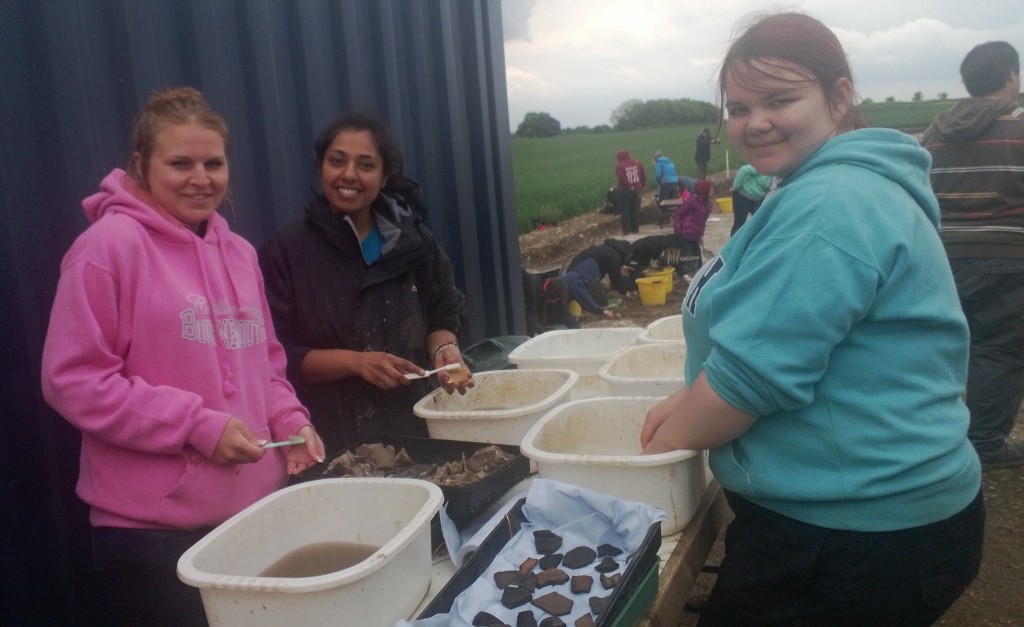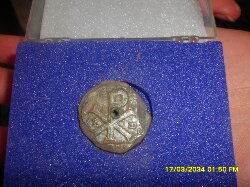Thursday 30th May 2013
Today’s activities were also cleaning back and straightening the edges so that full excavation of features can begin. In addition to this, the environmental archaeology station has been getting set up as well as on-site finds processing beginning. The photo below shows the on-site finds station, which undertakes sorting, cleaning and drying the artefacts.

Photo of students Catie Watts, Pooja Swali and Sara Gwynne working hard at the on-site finds processing station. Courtesy of Bournemouth University.
The finds processing was dealing with artefacts from the initial digging to remove the top-most soil layer before the cleaning back began in addition to the topsoil finds recovered from cleaning back. The initial digging finds included 2 Constantine the Great coins (which date between AD 307 to 337) and a Chi-Rho coin (which dates between AD 350 to 353). Coinage can be extremely useful as supplementary evidence for the dating of certain areas or occupation periods on the site. The photos below show what these coins look like:

Photo of the Constantine the Great coin taken by Carolina Ignacio, courtesy of Bournemouth University.
Dominique Hopton and Afifa khan recovered the star find of today, which was a Late Roman brooch, pictured below. The hinge catch was remarkably preserved but unfortunately the pin (probably made from iron) did not. Initial analysis of the brooch indicates that the material used for the brooch inset was enamel or coral or even opaque glass.

Late Roman brooch recovered from topsoil by Dominique Hopton and Afifa Khan. Courtesy of Bournemouth University.
Mid-way through the day, a perinate burial was also discovered very close to the soil surface. Due to the fragile and importance of such a find, careful excavation of the skeletal remains began as soon as possible. With such a burial, it is important to carefully judge the position of the burial as the bones become dis-articulated as the soft tissue between bones decomposes. Further lab work can determine the age and condition of the perinate!
